The milling industry in the U.S. has a long history of collaborating on issues for the advancement of the industry and to benefit the consumers it serves. While established in 1998, the foundation of the North American Millers’ Association (NAMA) is rooted in the members of the Millers’ National Federation, which was established in 1902; the American Corn Millers’ Federation, which was established in 1918; the American Oat Association, which was established in 1988; and the Protein Grain Products International.

The increased tendency for milling policy issues to cross state lines and have national implications led to a major overhaul of millers’ organizations in 1902. Delegates from 26 local, state, and regional associations met in Chicago and created the Millers’ National Federation (MNF). Bernard A. Eckart, president of Eckhart & Swan Milling Co. in Chicago, IL was chosen as the first president of MNF.
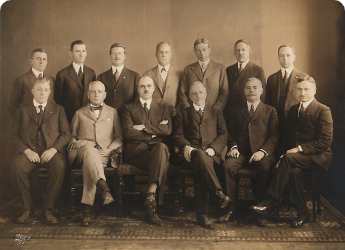
The Millers’ National Federation pledges their utmost cooperation in attaining maximum crop production and declaring they stand ready to place themselves wholly at the disposition of the president and the government. The MNF sent resolutions of confidence in President Woodrow Wilson and Herbert Hoover, chairman of the food control commission, to Washington, DC.
At the urging of the U.S. Food Administration, the American Corn Millers’ Federation was formed to bring all the corn millers from across the U.S. together in a movement to increase milled corn products and conserve wheat during wartime. A nation-wide advertising campaign was developed to educate consumers on the merits of corn food products and how they may be used to conserve wheat supplies.
At the urging of the U.S. Food Administration, the American Corn Millers’ Federation was formed to bring all the corn millers from across the U.S. together in a movement to increase milled corn products and conserve wheat during wartime. A nation-wide advertising campaign was developed to educate consumers on the merits of corn food products and how they may be used to conserve wheat supplies.
The Millers’ National Federation establishes the Wheat Flour Institute to promote flour consumption in the U.S. A plan was developed to spend $1 million on a three year campaign to highlight the scientific facts relative to the value of wheat products as food.
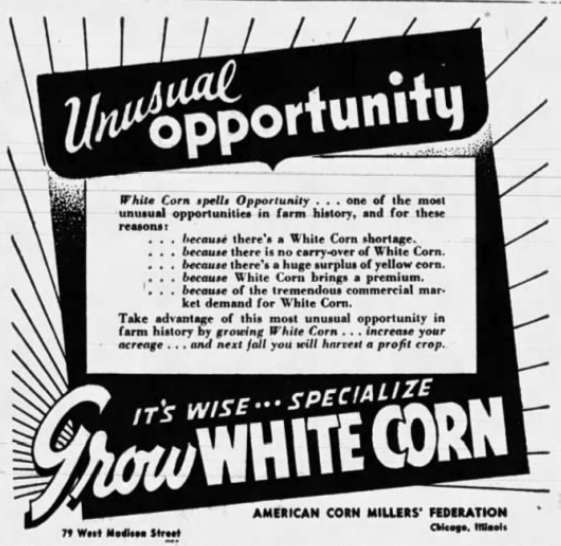
The American Corn Millers’ Federation launch a campaign to convince farmers they should grow white corn due to the increased demand for corn meal, grits, corn flakes and feed. Producers were receiving a premium of about 3 cents and 4½ cents more per bushel over yellow corn in 1935 and 1936, respectfully. The federation began working with the University of Illinois experimental farm in developing a hybrid white corn to produce a better milling yield.
The Millers’ National Federation was among the first to propose federal definitions for their products. After lengthy hearings in 1940, the official Food and Drug Administration flour definitions and standards went into effect in 1942.
President Dwight D. Eisenhower signed what was then known as the Agricultural Trade Development and Assistance Act, or Public Law 480. In 1961, the law got another name when President Kennedy expanded the program and renamed it “Food for Peace.”
For the first time, corn meal was made available in the school lunch program. The American Corn Millers’ Federation collaborated with the University of Alabama School of Home Economics to develop a variety of corn meal-based recipes.
Domestic consumers use more than 200,000,000 cwt. of wheat flour with about seventy five percent going to bakers and other secondary processors, and the remainder being used in home kitchens. At the beginning of the 20th century, little more than ten percent of flour went to bakeshops. By the end of the first World War that number doubled and when the second World War came to an end nearly sixty percent of flour went to bakeries.
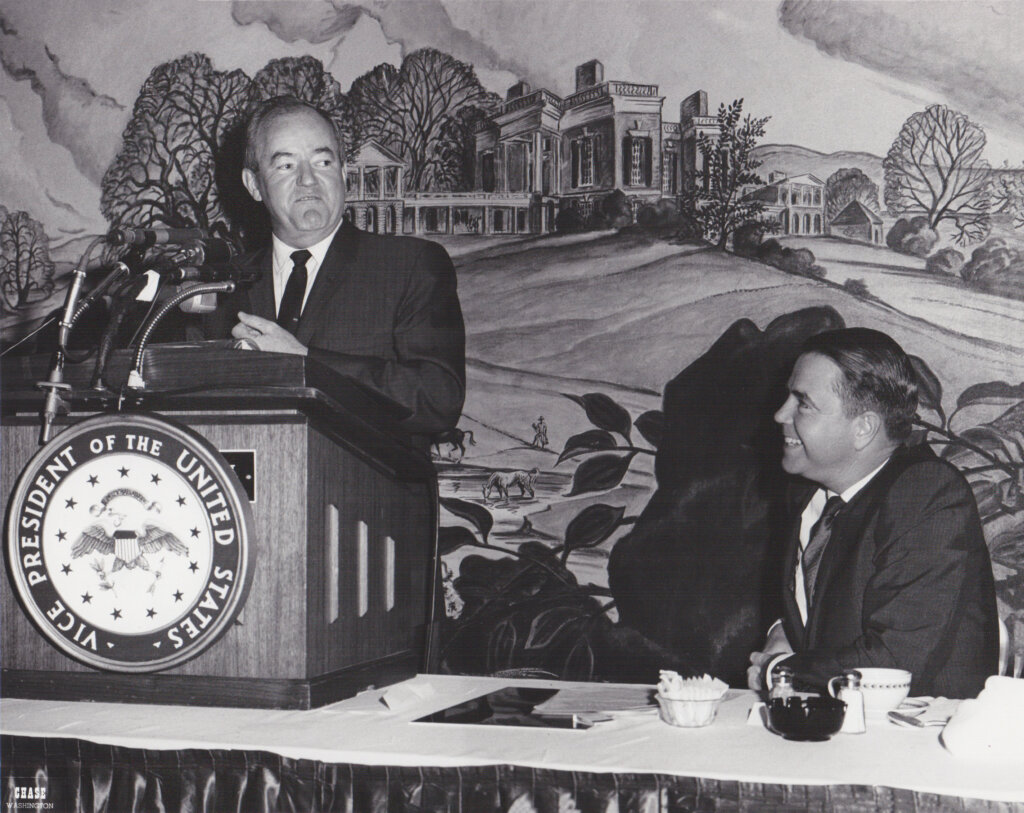
Vice President Hubert H. Humphrey addresses a dinner meeting of the 63rd annual convention of the Millers’ National Federation where he discussed the administration’s policies.
A three-year program of the American Corn Millers’ Federation has produced new formulas to nourish tens of millions of pre-school children in developing countries. One of the products is a combination of corn or cereal, plant and protein formulated by Dr. Gerald F. Combs, assistant chief of the nutrition section of the Office of International Research, National Institutes of Health.
The Millers’ National Federation headquarters is moved from Chicago, IL to Washington, DC. As of 1975, MNF had 57 member companies with 150 plants that produced more than eighty five percent of the nation’s flour.
The American Oat Association (AOA) is established as an industry wide association of members, including producers, processors, cereal manufactures, traders, transportation companies, researchers, feed mill companies, and seed dealers.
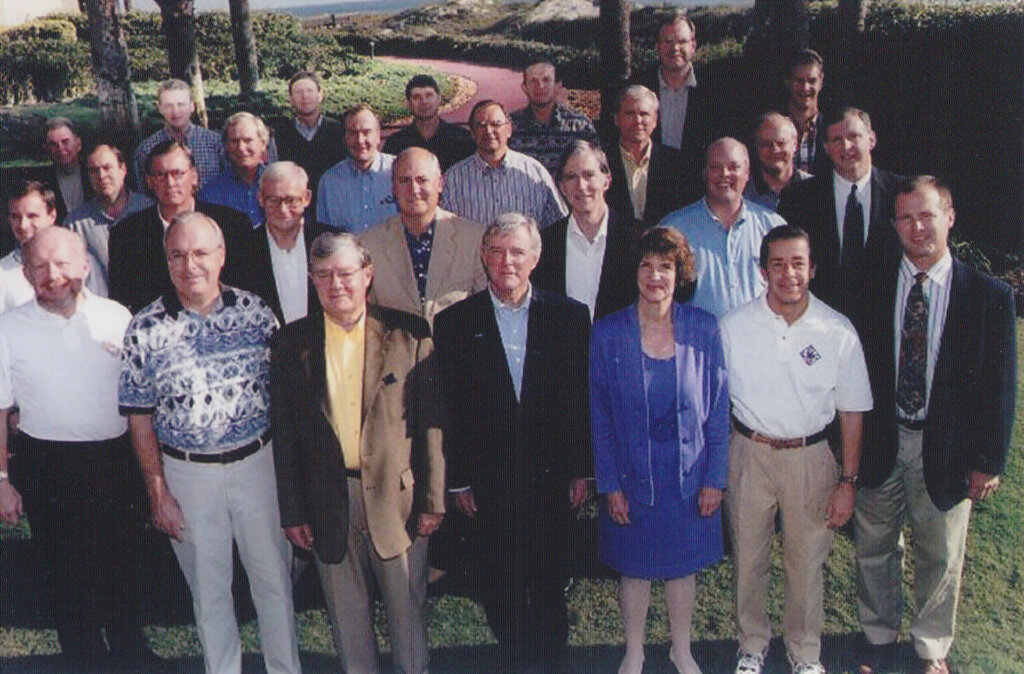
The Millers’ National Federation, American Corn Millers’ Federation, and the Protein Grain Products International come together to form the North American Millers’ Association. Craig Hamlin of ADM Milling was named chairman.
It was announced at the NAMA annual meeting that the American Oat Association would be merging with NAMA, expanding its membership to include millers of wheat, corn, and oat.
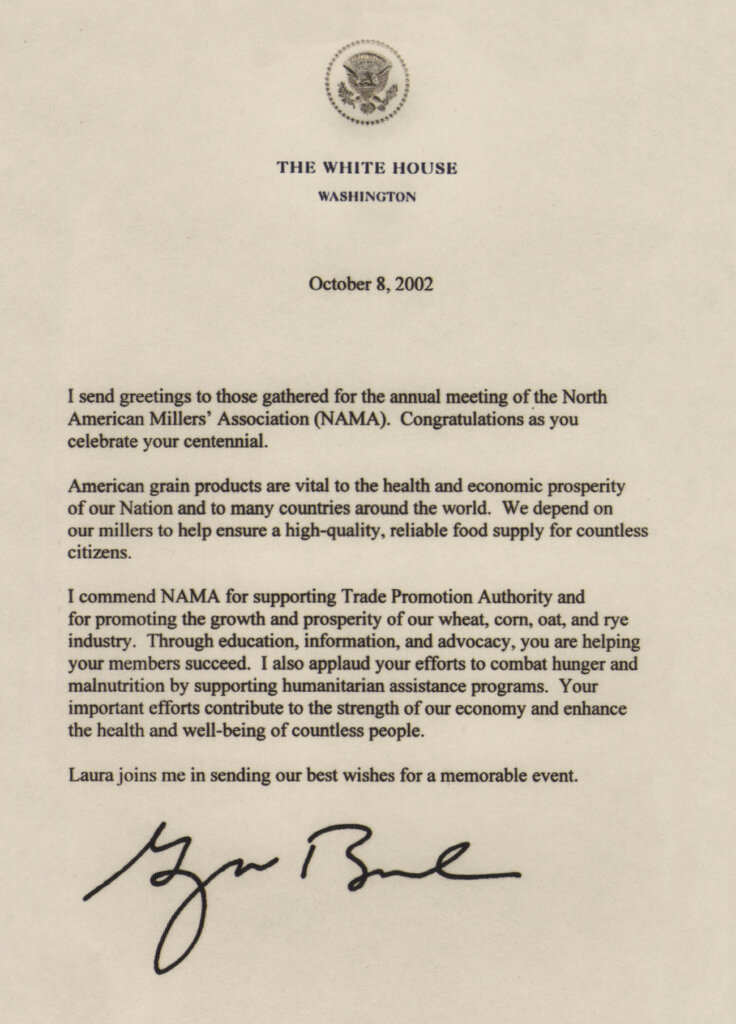
President George Bush congratulates the North American Millers’ Association on celebrating its centennial.
NAMA was a lead sponsor of a celebration honoring the 60th anniversary of the Food for Peace International Food Aid Program. Food for Peace has been lauded as one of the greatest humanitarian programs of all time, affecting or saving the lives of over 3 billion people in 60 years.
The 60th Annual Corn Dry Milling Conference was held at the USDA’s National Center for Agricultural Utilization Research (NCAUR) in Peoria, Illinois. The annual conference is a unique gathering of different sectors of the dry corn milling industry, including industry representatives, researchers and others, to review the latest research, share views on current critical research issues and industry trends and discuss other topics of general interest to the corn dry milling industry.